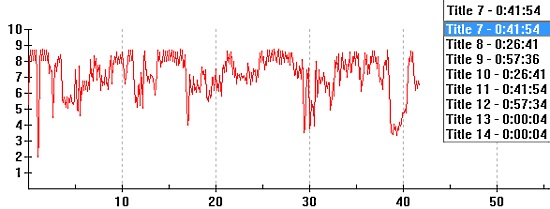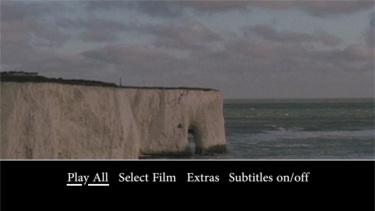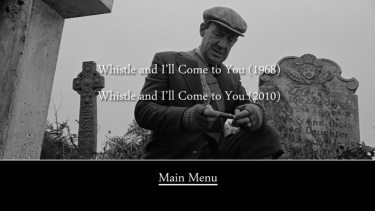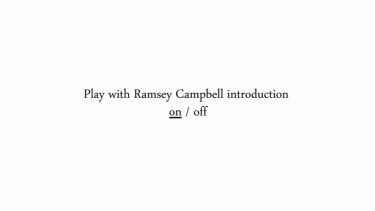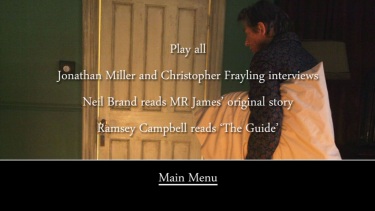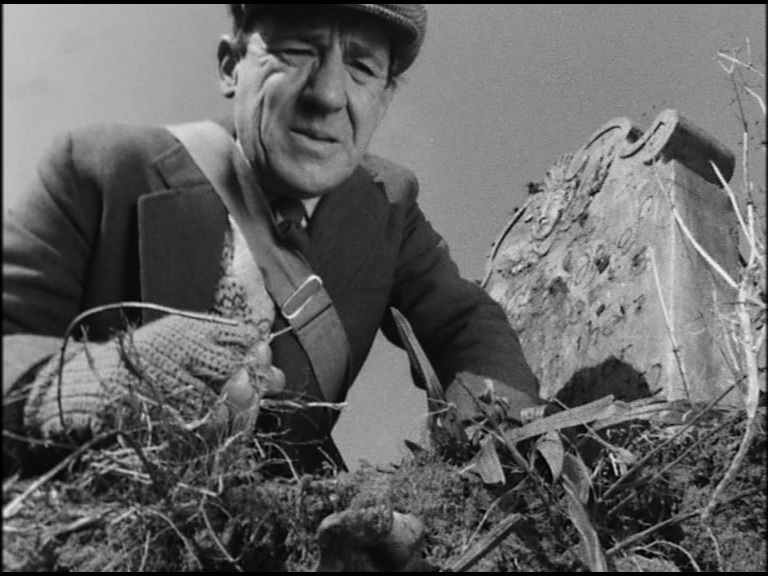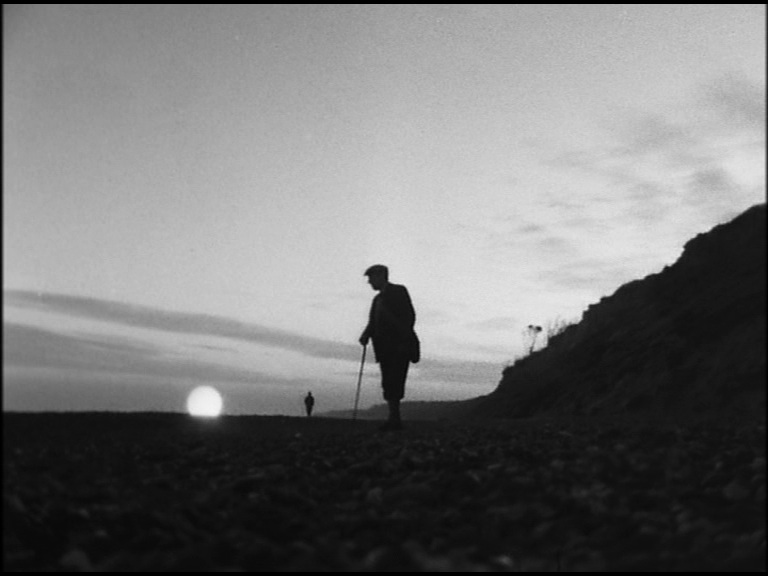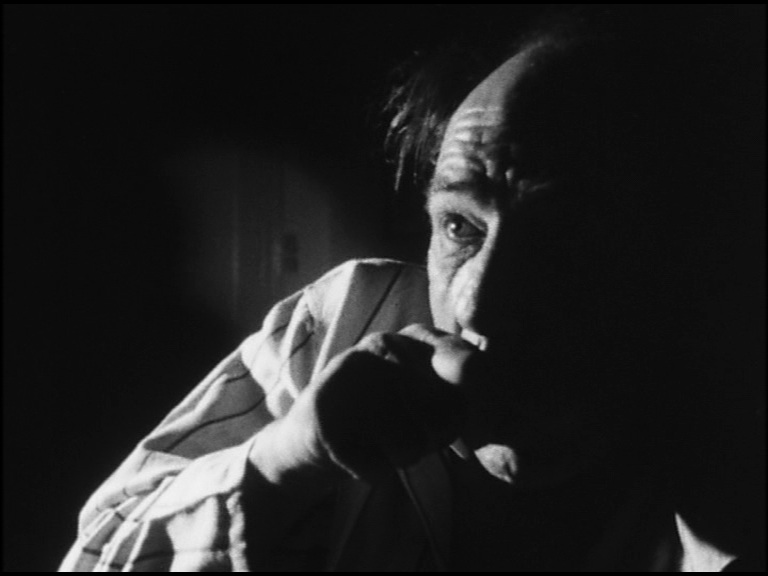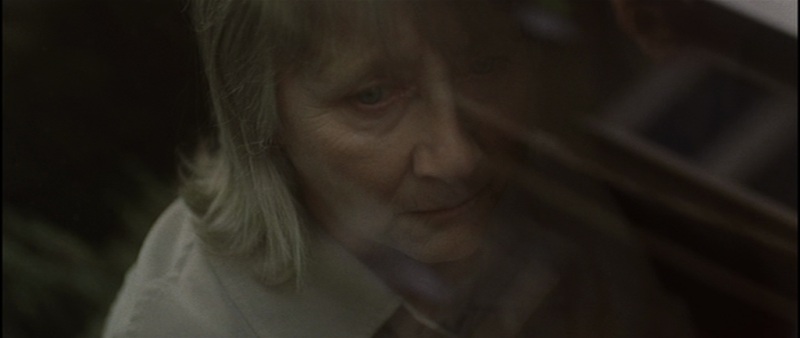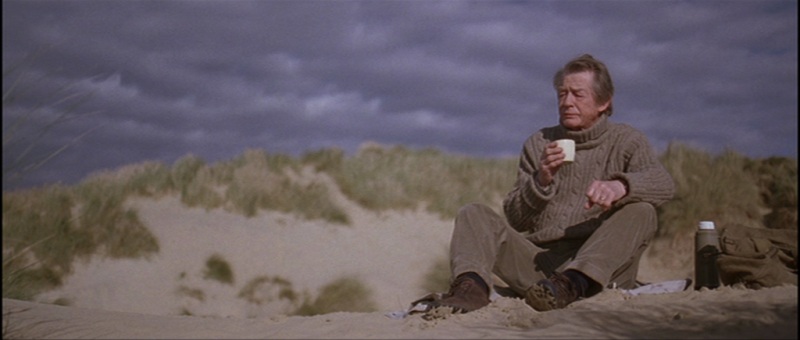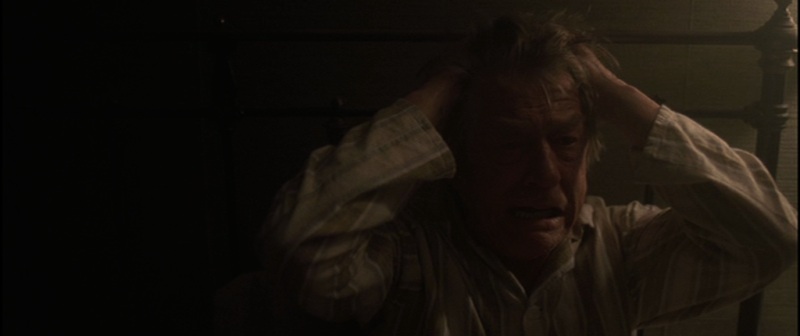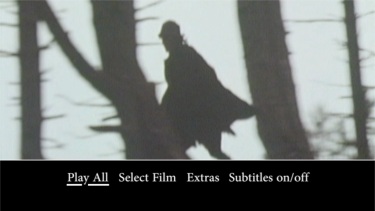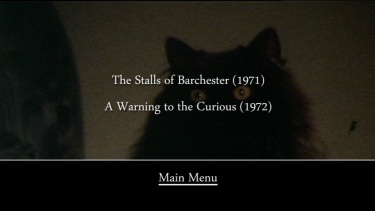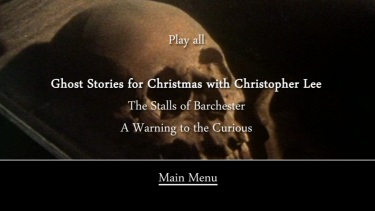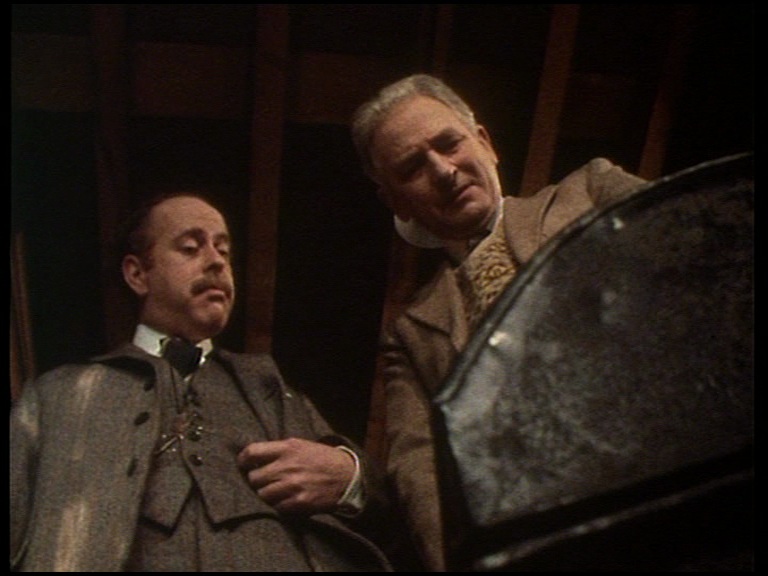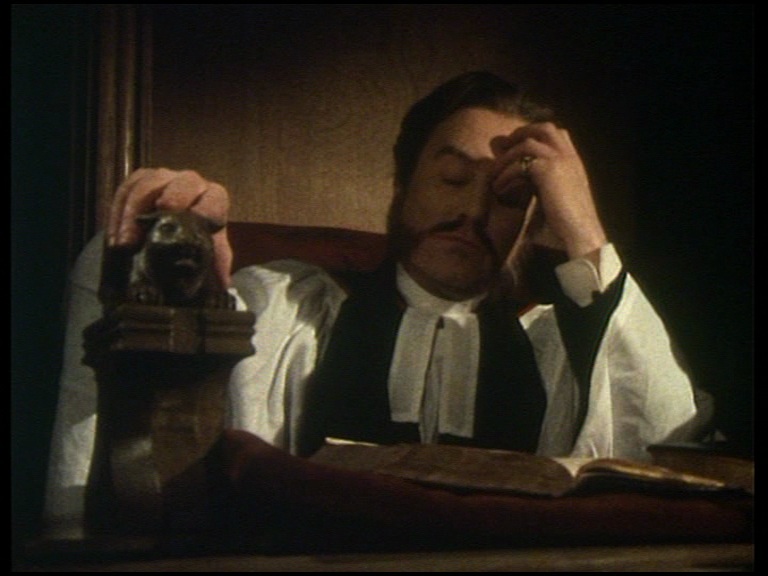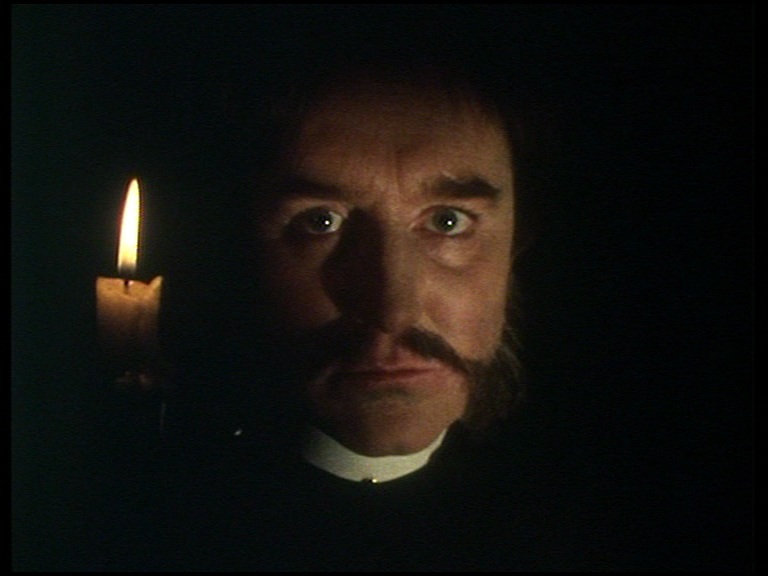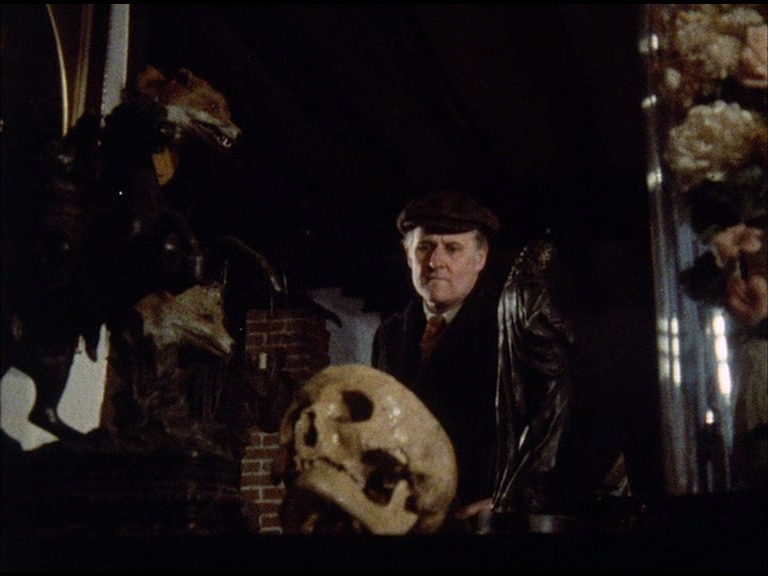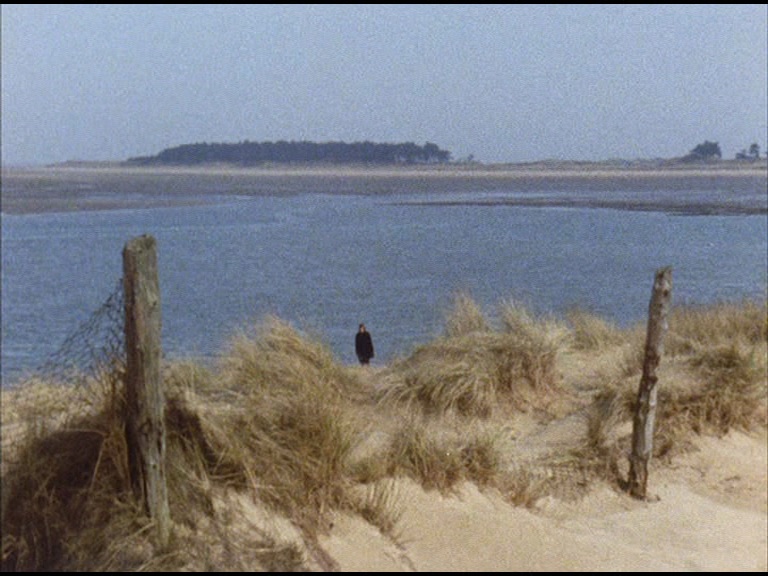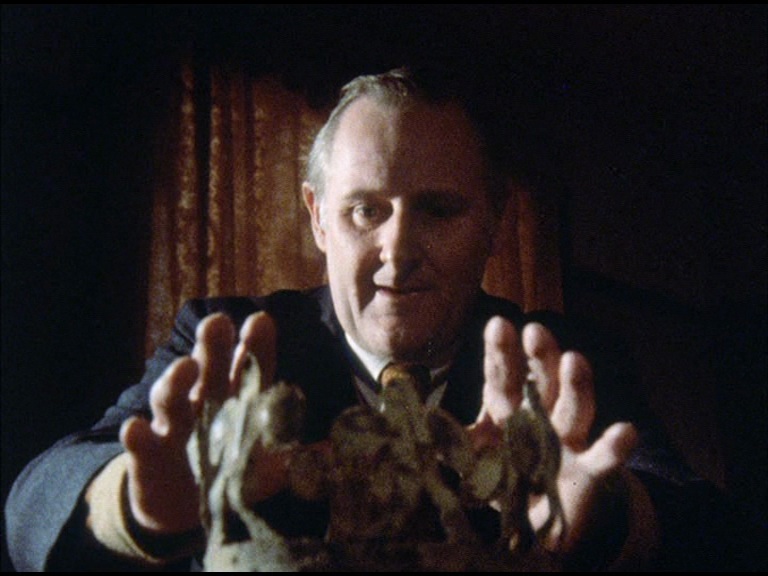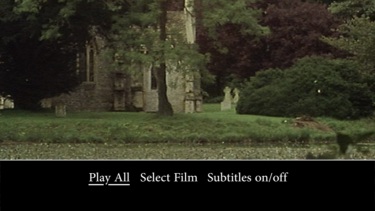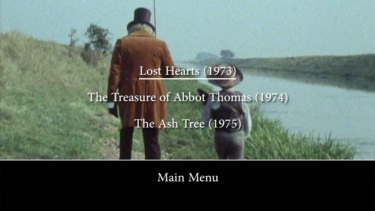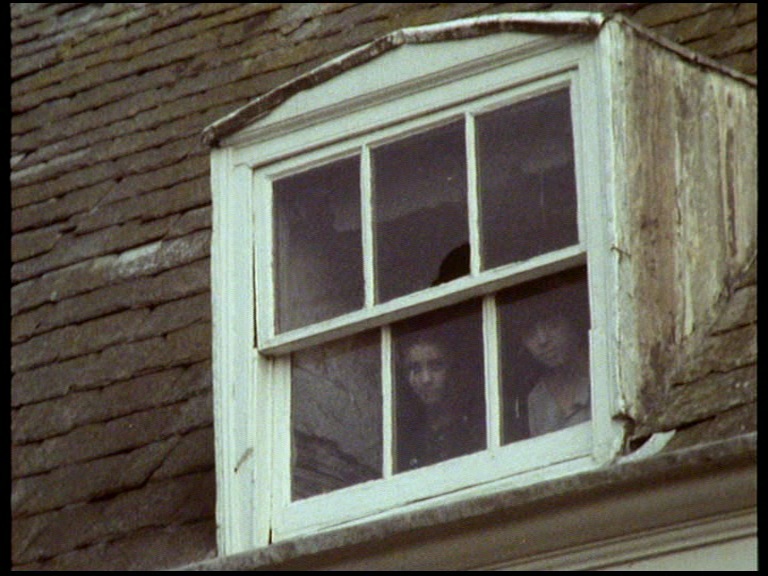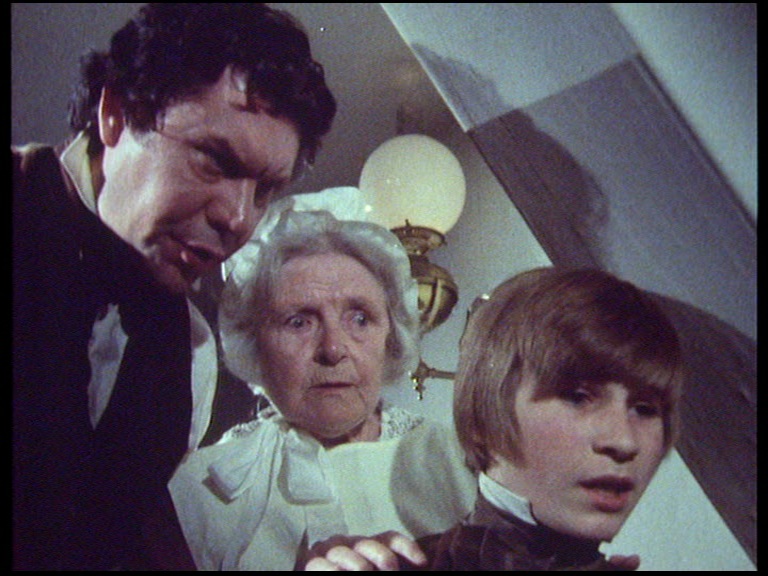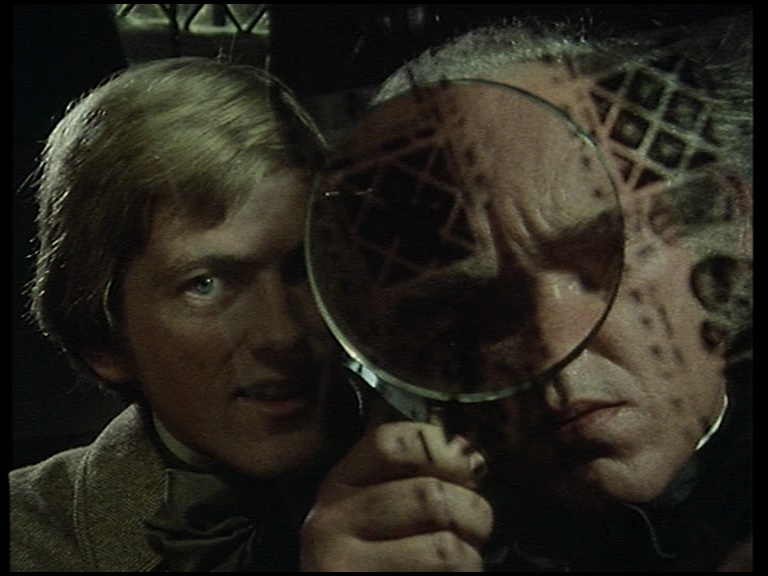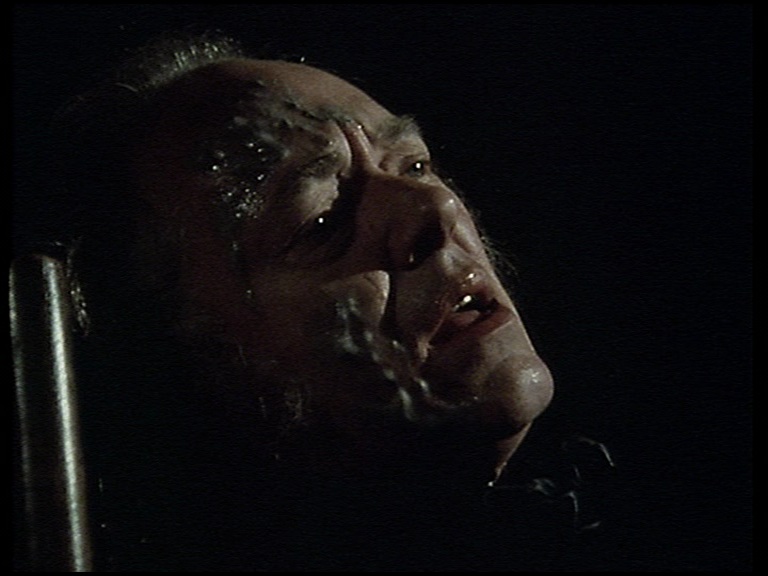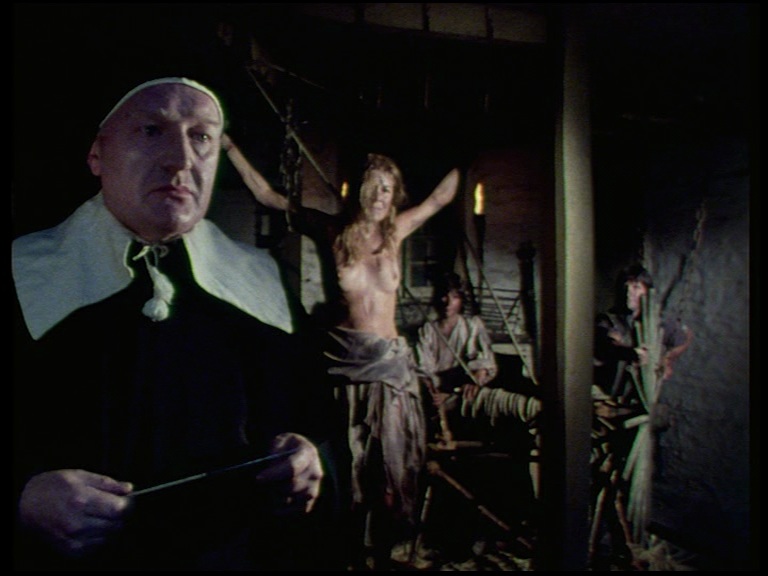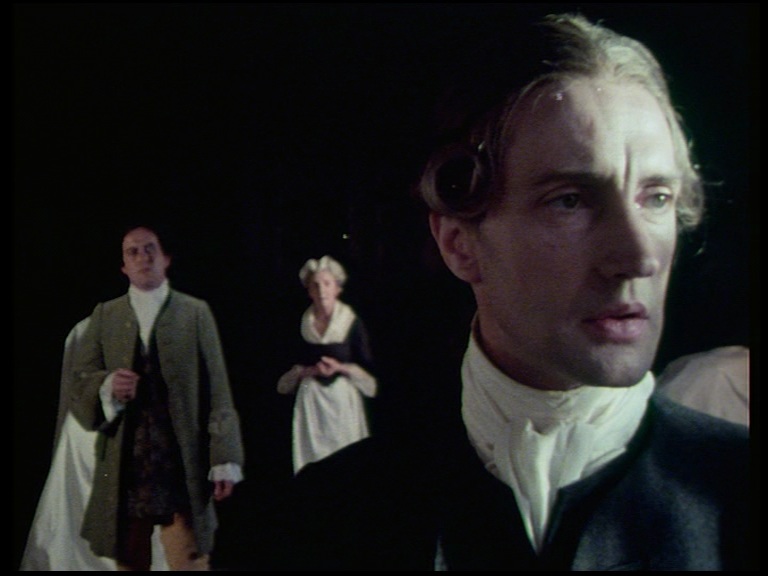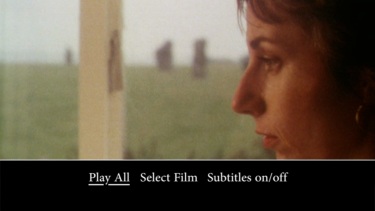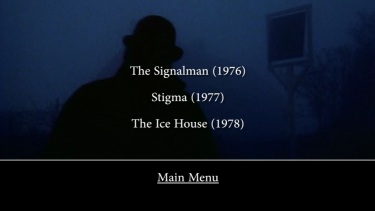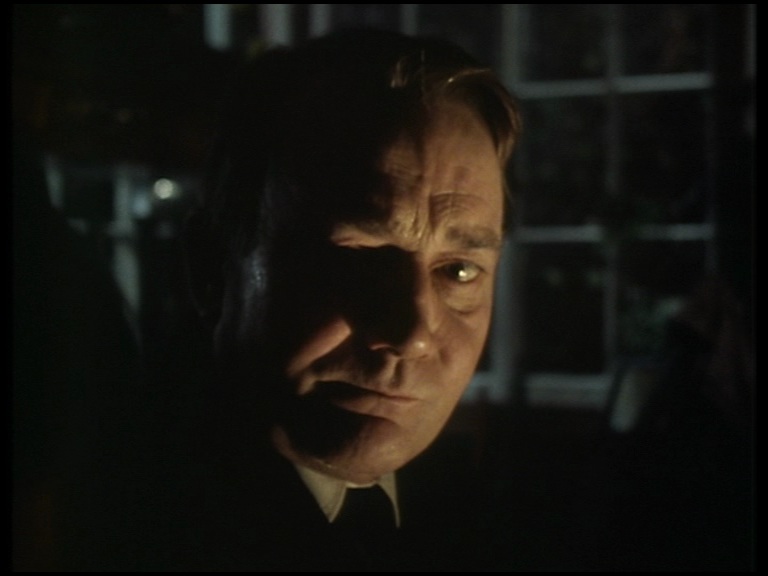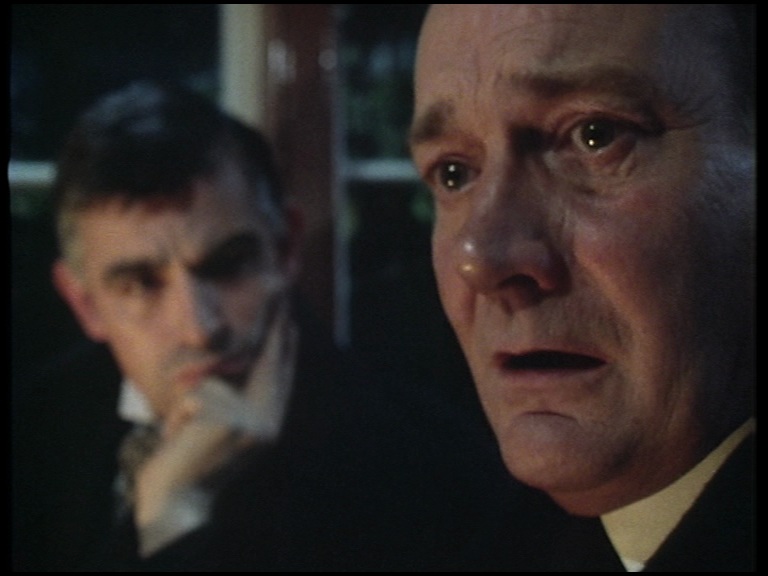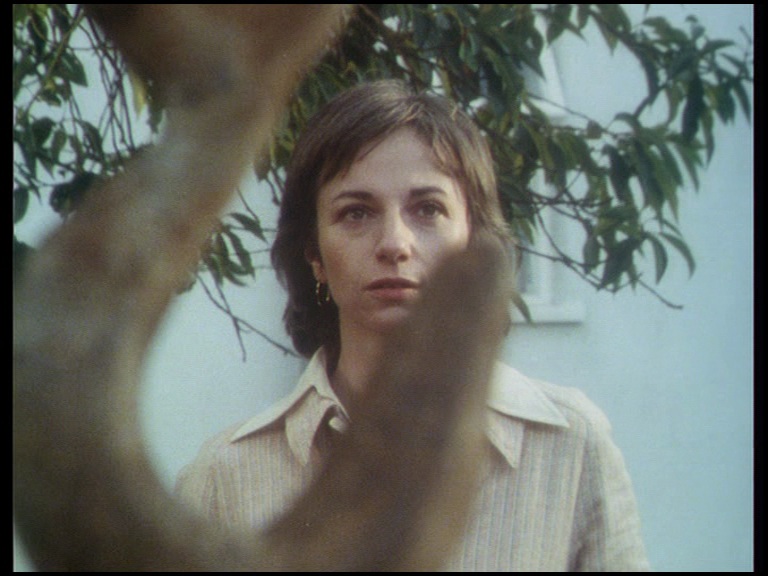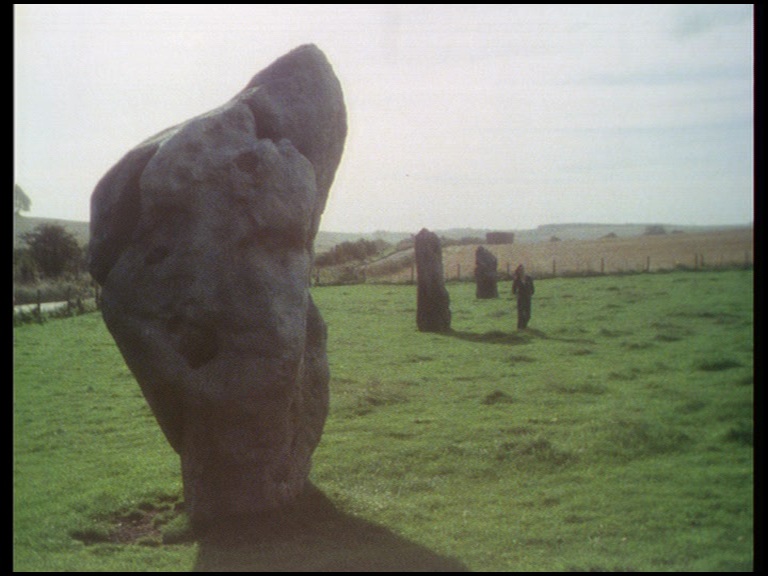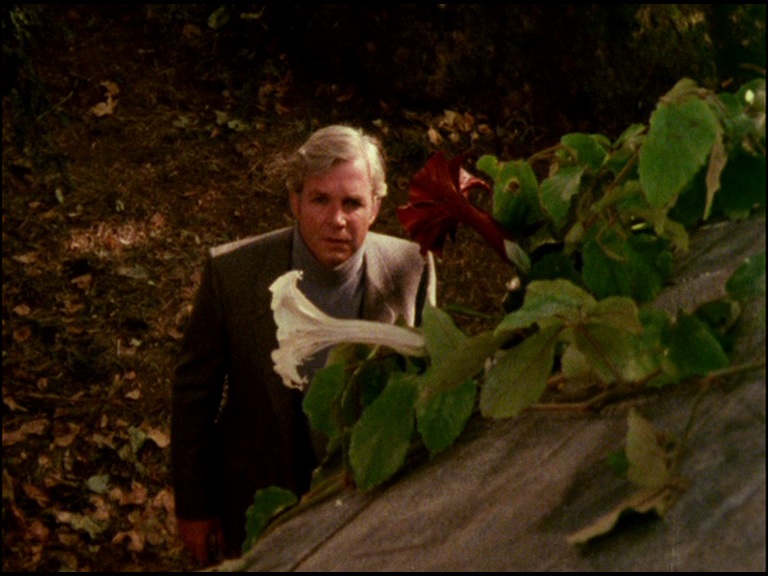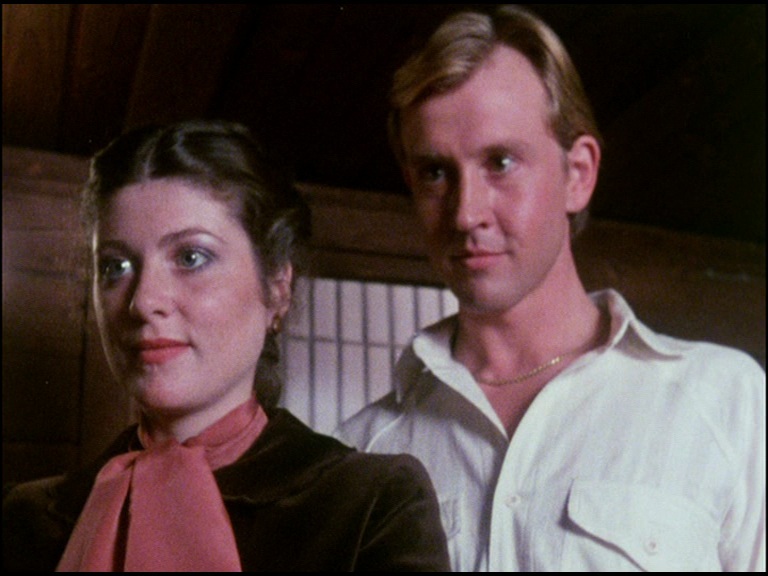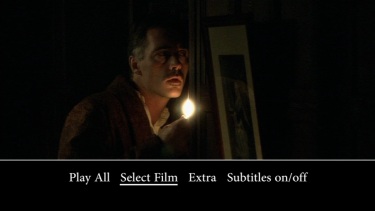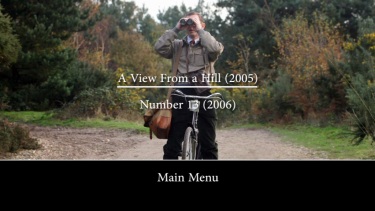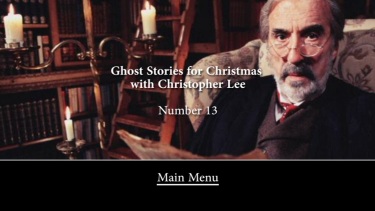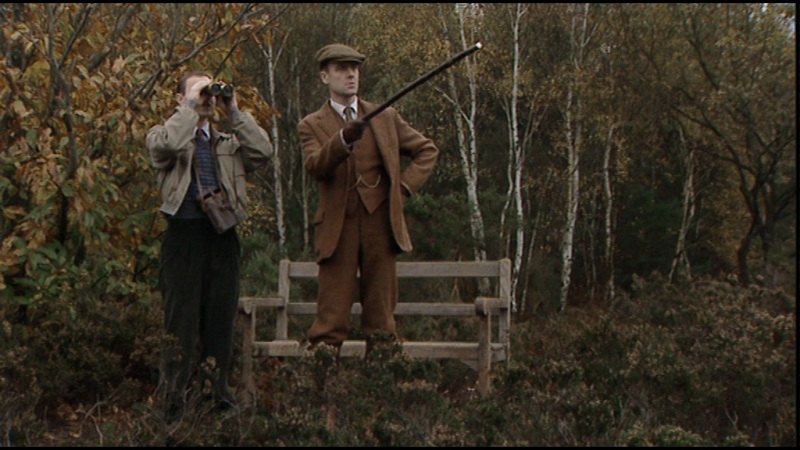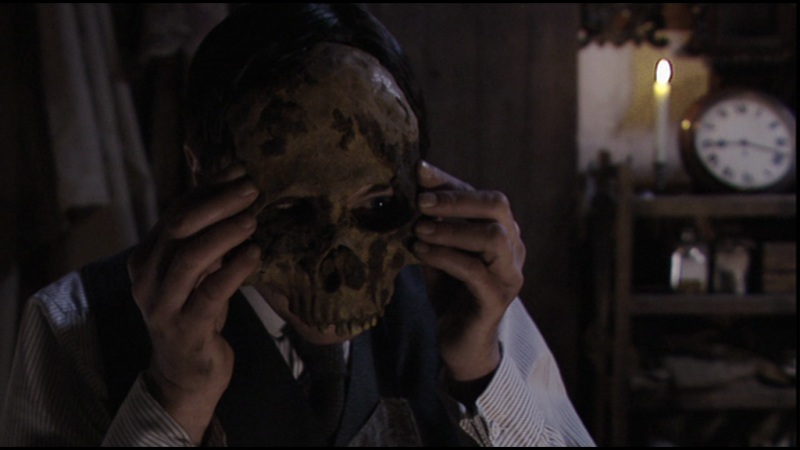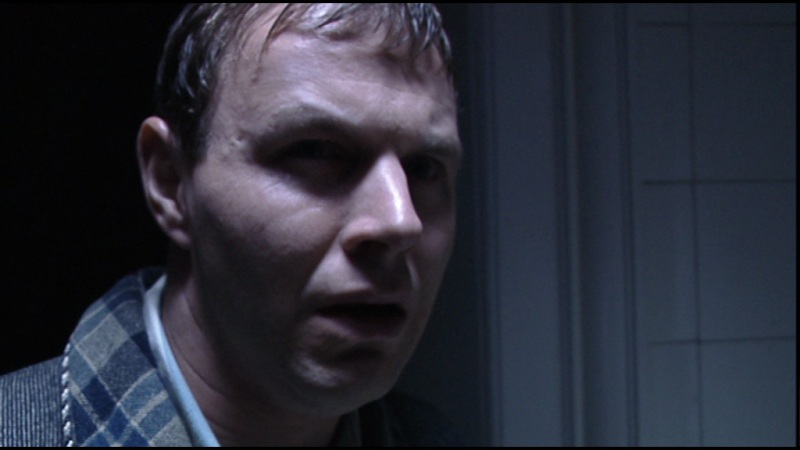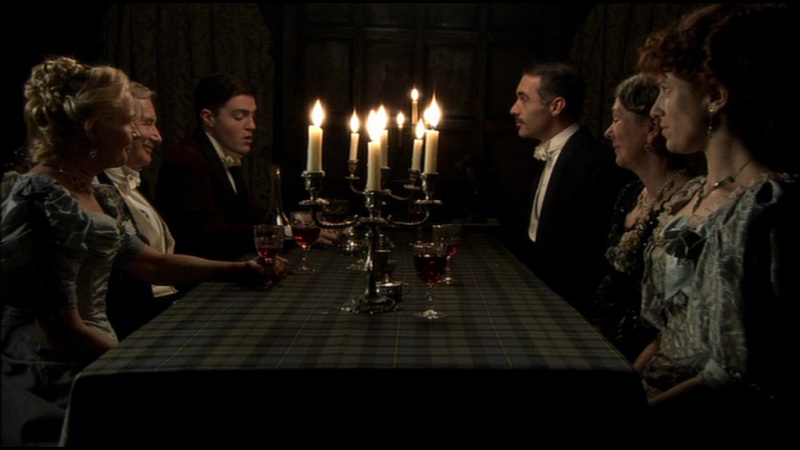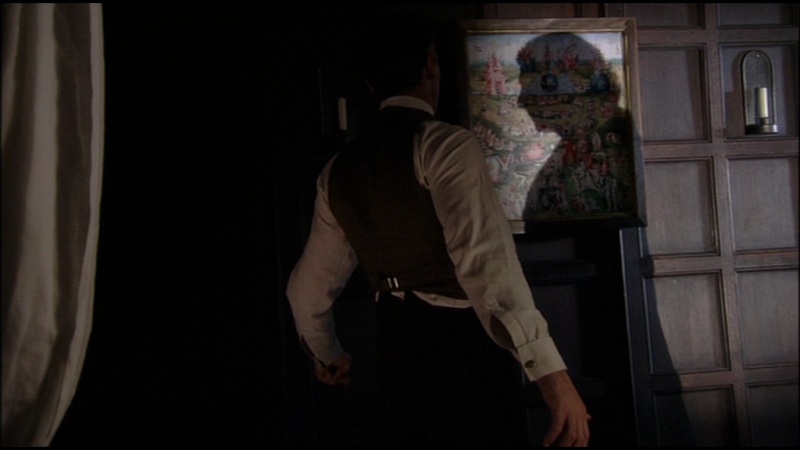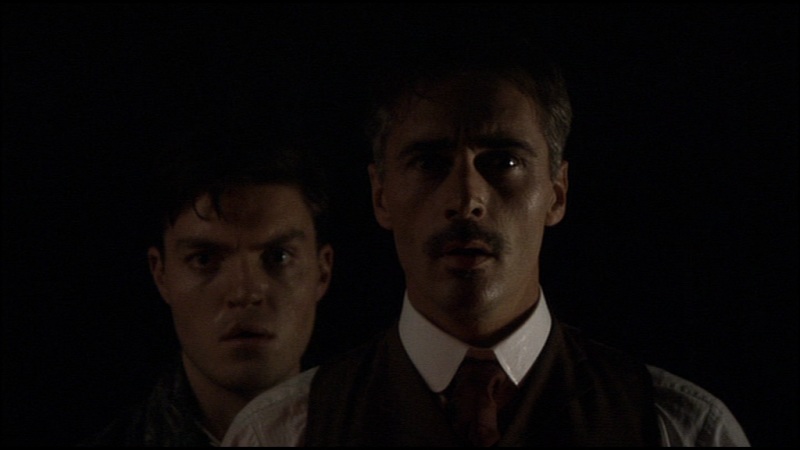|
Firstly, a massive thank you to our Patreon supporters. Your generosity touches me deeply. These supporters have become the single biggest contributing factor to the survival of DVDBeaver. Your assistance has become essential.
What do Patrons receive, that you don't?
1)
Our
weekly
Newsletter
sent to your Inbox every
Monday morning!
Please consider keeping us in existence with a couple of dollars or more each month (your pocket change!) so we can continue to do our best in giving you timely, thorough reviews, calendar updates and detailed comparisons. Thank you very much. |
![]()
![]()

![]()
![]()
|
Search DVDBeaver |
S E A R C H D V D B e a v e r |
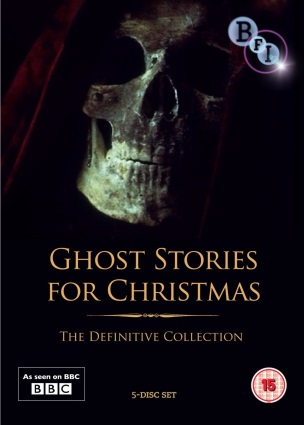 |
Ghost Stories for Christmas - The Definitive Collection (5-DVD set)
Ghost Stories for Christmas: Volume 1 on Blu-ray is reviewed and compared HERE
Ghost Stories for Christmas: Volume 2 on Blu-ray is reviewed and compared HERE
Whistle and I'll Come to You (1968 & 2010 versions)
The Stalls of Barchester (1971)
A Warning to the Curious (1972)
Lost Hearts (1973)
The Treasure of Abbot Thomas (1974)
The Ash Tree (1975)
The Signalman (1976)
Stigma (1977)
The Ice House (1978)
A View From a Hill (2005)
Number 13 (2006)
| The British Film Institute’s GHOST STORIES FOR CHRISTMAS: THE DEFINITIVE COLLECTION actually contains two separate releases. The first is THE M.R. JAMES COLLECTION which includes all of the original Lawrence Gordon Clark-helmed M.R. James adaptations for the series (he also directed CASTING THE RUNES for Yorkshire Television, but that is not included here) as well as the 1968 OMNIBUS adaptation of WHISTLE AND I’LL COME TO YOU (often lumped in with the “Ghost Story for Christmas” films), a 2010 adaptation of that story, as well as recent adaptations of A VIEW FROM A HILL and NUMBER 13, and three episodes of GHOST STORIES FOR CHRISTMAS with Christopher Lee. The DEFINITIVE COLLECTION also contains a separate single disc feature the three “Ghost Story for Christmas” films that were not based on James stories (Charles Dickens’ THE SIGNALMAN and the original stories STIGMA and THE ICE HOUSE). All five discs were released individually earlier in 2012 by BFI. |
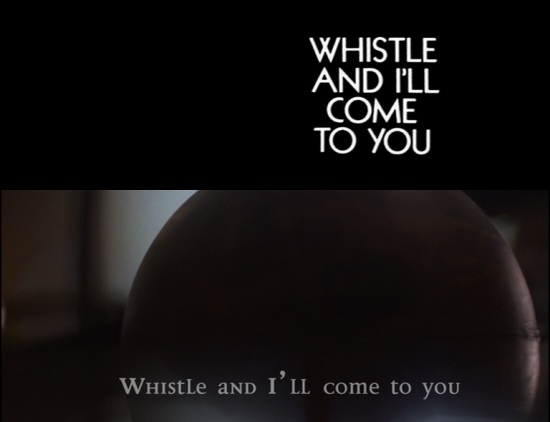
(aka "Whistle and I'll Come to You (1968)" or "Whistle & I'll Come to You (2010)")
directed by Jonathan Miller (1968 version) and Andy De Emmony (2010
version)
UK (1968 & 2010)
|
In M.R. James' "Oh, Whistle an
I'll Come to You, My Lad", Professor Parkins takes a seaside
golfing holiday at a resort next to the ruins of a Knights
Templar cemetery. He is given a bedroom with two beds (because
there is nowhere to store the other bed). Wandering the nearby
cemetery, Parkins finds an ancient whistle upon which is
engraved in Latin "Who is this who is coming?" He experimentally
blows the whistle, and the subsequent nights are filled with
nightmares and evidence that the other bed in his room is being
occupied during the night. |
DVD Review: The British Film Institute - Region 2 - PAL
Big thanks to Eric Cotenas for the Review!
| DVD Box Cover |
|
CLICK to order from: |
| Distribution |
The British Film Institute Region 2 - PAL |
|
| Runtime | 1:33:58 | |
| Video |
Original Aspect Ratio
16X9 enhanced |
|
|
NOTE: The Vertical axis represents the bits transferred per second. The Horizontal is the time in minutes. |
||
| Bitrate |
|
|
| Audio | English Dolby Digital 2.0 mono (1968 version); English Dolby Digital 2.0 stereo (2010 version) | |
| Subtitles | English, none | |
| Features |
Release Information: Studio: The British Film Institute Aspect Ratio:
Edition Details: Chapters |
|
| Comments |
Ghost Stories for Christmas: Volume 1 on Blu-ray is reviewed and compared HERE Ghost Stories for Christmas: Volume 2 on Blu-ray is reviewed and compared HERE The 1968 version has been transferred from original 16mm materials (rather than an existing video master). The image has been cleaned up, but persistent spots on the image could not be entirely obliterated and appear transparent (they are more noticeable on the exterior scenes). The Dolby Digital mono audio is clean and sometimes vivid (I thought the distorted heartbeat sound during the nightmares was coming from outside my window rather than the speakers). The 2010 version is, of course, shot in HD and is presented in 16:9. The frame is matted to 2.35:1, and that appears to be how it was broadcast as the matting doesn't harm the compositions (nor does it really add to them either). The 2.0 stereo track is more active than the older film, but less effective. Composer Neil
Brand reads James' original story in its entirety over stills,
while author Ramsey Campbell reads his James-inspired story "The
Guide". Campbell also appears in a lengthy optional introduction
preceding the 1968 version that frames James' work in the
context of several examples of other supernatural fiction of the
period, subsequent literature inspired by James, film
adaptations (including Jacques Tourneur's
NIGHT OF THE DEMON) and films inspired by James
(including Michele Soavi's THE CHURCH - aspects of which
recall "The Treasure of Abbot Thomas" - and RINGU), as well as
BBC's "Ghost Stories for Christmas" here. When addressing the
1968 version of "Whistle and I'll Come to You", he offers a
Freudian interpretation and suggests reasons that this
adaptation may be the least favorite of some James fans. 1968
version director Jonathan Miller and writer/film critic
Christopher Frayling appear in a brief interview segment on the
film and source story. |
| The 5 Discs are sold as a set - or individually: | |||||
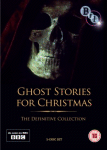 |
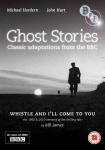 |
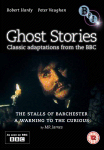 |
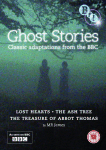 |
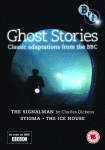 |
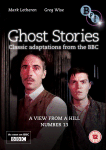 |
DVD Menus
|
|
|
|
|
|
Screen Captures
|
|
|
|
|
|
|
|
|
|
|
|
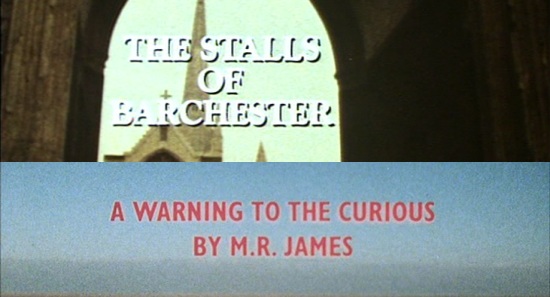
(aka "The Stalls of Barchester (1971)" or "A Warning to the Curious (1972)")
directed by Lawrence Gordon Clark
UK (1971 & 1972)
Ghost Stories for Christmas: Volume 1 on Blu-ray is reviewed and compared HERE
|
Disc two comprises the
first two of Lawrence Gordon Clark's M.R. James
adaptations: THE STALLS OF BARCHESTER and A
WARNING TO THE CURIOUS. In the first, historian Dr.
Black (Clive Swift, TV's KEEPING UP APPEARANCES)
while cataloging a church library comes across a chest
containing the letters and diary of the late Archdeacon
Haynes of Barchester, who died under mysterious
circumstances fifty years before. From the diary, he
learns that Haynes (Robert Hardy, TV's ALL CREATURES
GREAT AND SMALL) may have gone to criminal lengths
to replace his aged predecessor (Harold Bennett, TV's
ARE YOU BEING SERVED); after which he experienced
persecuting seemingly supernatural visitations taking
the form of a black cat and cowled figure (carvings that
flank his choir stall). Looking into the background of
the carvings, he discovers that they were fashioned from
a tree known in pagan times as "The Hanging Oak". Is his
guilty conscience getting the better of him, or does
something more evil lurk in the Barchester cathedral. |
DVD Review: The British Film Institute - Region 2 - PAL
Big thanks to Eric Cotenas for the Review!
| Distribution |
The British Film Institute Region 2 - PAL |
| Runtime | 1:35:21 |
| Video |
1.33:1 Original Aspect Ratio |
|
NOTE: The Vertical axis represents the bits transferred per second. The Horizontal is the time in minutes. |
|
| Bitrate |
|
| Audio | English Dolby Digital 2.0 mono |
| Subtitles | English, none |
| Features |
Release
Information: Studio: The British Film Institute Aspect Ratio:
Edition Details: Chapters |
| Comments |
BFI's
booklet says that THE STALLS OF BARCHESTER and
A WARNING TO THE CURIOUS were both transferred from
the original 16mm materials (A WARNING TO THE CURIOUS
was the only one transferred in high definition). Since
these TV films have previously been exhibited in the
form of video masters, I'm going to guess that the rare
scratches and vertical lines have more to do with the
processing and perhaps the storage than multiple runs
through the projector. The title sequences look a tad
softer, but that may be because of the opticals or they
may have been grafted in from other sources. The Dolby
Digital 2.0 mono audio (320 kbps) is fairly clean and
does not exhibit any digital noise reduction artifacts.
Also
included are "Ghost Stories for Christmas with
Christopher Lee" episodes of the stories in which the
actor (who was at Eton while James was provost) plays
the author telling the stories over brandy with a
handful of students at Kings College (with cutaways to
various relevant props and settings but no actors). Not
entertaining on their own, but useful for comparing the
more faithful readings to Clark dramatizations. |
| The 5 Discs are sold as a set - or individually: | |||||
 |
 |
 |
 |
 |
 |
DVD Menus
|
|
|
|
|
|
Screen Captures
|
|
|
|
|
|
|
|
|
|
|
|
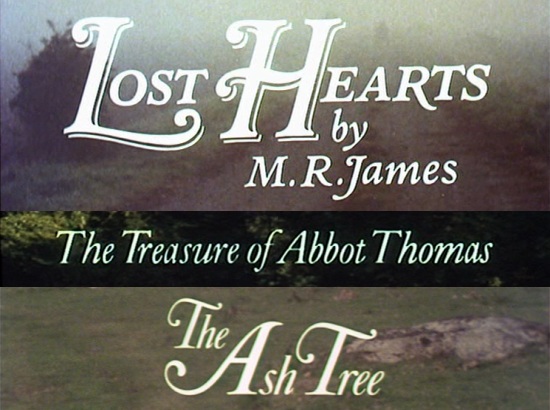
(aka "Lost Hearts (1973)" or "The Treasure of Abbot Thomas (1974)" or "The Ash Tree (1975)")
directed by Lawrence Gordon Clark
UK (1973-1975)
|
The three episodes
of GHOST STORIES FOR CHRISTMAS on disc
three were made with the full resources of the
BBC drama department (as well as the
participation of more experienced dramatists).
Although still shot on location and entirely on
film, they are a bit slicker than THE STALLS
OF BARCHESTER and A WARNING TO THE
CURIOUS. They are also slightly shorter at
roughly thirty-five minutes each (compared to
the near fifty minute running times of the first
two entries) which - combined with the shorter
shooting schedules - require an overall more
economical approach to the narrative and
technical aspects of storytelling. |
DVD Review: The British Film Institute - Region 2 - PAL
Big thanks to Eric Cotenas for the Review!
| Distribution |
The British Film Institute Region 2 - PAL |
| Runtime | 1:43:32 |
| Video |
1.33:1 Original Aspect Ratio |
|
NOTE: The Vertical axis represents the bits transferred per second. The Horizontal is the time in minutes. |
|
| Bitrate |
|
| Audio | English Dolby Digital 2.0 mono |
| Subtitles | English, none |
| Features |
Release
Information: Studio: The British Film Institute Aspect
Ratio:
Edition
Details: Chapters |
| Comments |
All three films have been newly transferred in standard definition from 16mm elements and any damage has to do with their original processing and archiving rather than any projections. The encodings are probably as true as they can be giving the 16mm gauge and the decision not to master in high definition. The audio is in fine condition and the optional English subtitles are a welcome addition. All three films are preceded by optional introductions by director Lawrence Gordon Clark.
For LOST HEARTS, Clark reveals that it
was the first of the series made with the full
resources of BBC's drama department (Clark came
from the documentary department and used those
resources for the first two films), and
discusses locations, child actors, and
interprets the story's underlying theme as child
abuse. He recalls how he compared the episode's
graphic violence to that of the contemporary
series I, CLAUDIUS (and was told "It's
alright if it's in togas!"). On THE TREASURE
OF ABBOT THOMAS, Clark mentions that it was
the first episode to feature an original score,
the change from the story's German location to
England, the shooting opportunities afforded by
the locations (Clark had a harder time getting
permission to film there because it had been
used previously by Pier Paolo Pasolini to shoot
an orgy for
THE CANTERBURY TALES), and the other
changes to the story. For THE ASH TREE, Clark
ruminates on the story's veiled sexual
frustration, and discusses the challenges of
finding the perfect ash tree. |
| The 5 Discs are sold as a set - or individually: | |||||
 |
 |
 |
 |
 |
 |
DVD Menus
|
|
|
Screen Captures
|
|
|
|
|
|
|
|
|
|
|
|
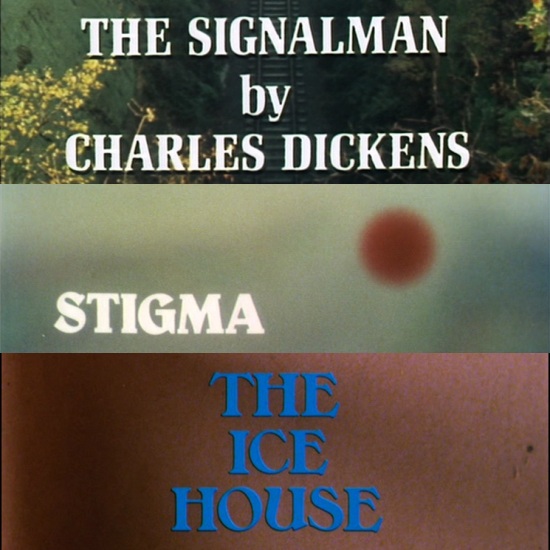
(aka "The Signalman (1976)" or "Stigma (1977)" or "The Ice House (1978)")
directed by Lawrence Gordon Clark (The Signalman
& Stigma) and Derek Lister (The Ice House)
UK (1976/1977/1978)
|
Disc four
comprises the last three films in the
original A GHOST STORY FOR CHRISTMAS
SERIES, two of which were directed
by series originator Lawrence Gordon
Clark (who had left the BBC for
Yorkshire Television - where he would
direct an adaptation of M.R. James'
CASTING THE RUNES - after THE
SIGNALMAN but had been asked back to
helm STIGMA) and the last directed by
Derek Lister. |
DVD Review: The British Film Institute - Region 2 - PAL
Big thanks to Eric Cotenas for the Review!
| Distribution |
The British Film Institute Region 2 - PAL |
| Runtime | 1:44:16 |
| Video |
1.33:1 Original Aspect Ratio |
|
NOTE: The Vertical axis represents the bits transferred per second. The Horizontal is the time in minutes. |
|
| Bitrate |
|
| Audio | English Dolby Digital 2.0 mono |
| Subtitles | English, none |
| Features |
Release Information: Studio: The British Film Institute
Aspect Ratio:
Edition Details: Chapters |
| Comments |
This is disc four as identified by the outer slipcase, but it is actually in a standalone case as volume four of the GHOST STORIES FOR CHRISTMAS adaptations. Disc four as identified on the back cover of the double-wide four-disc M.R. JAMES COLLECTION case inside the slipcase is actually volume five of the individual editions (comprising the more recent adaptations of A VIEW FROM THE HILL and NUMBER 13.
All three
films are transferred in standard
definition from 16mm archival materials.
Print damage is quite minimal (THE
ICE HOUSE is the most recent and
looks the best, but the other two films
are not far behind) and the Dolby
Digital 2.0 mono tracks are clean. Since
Lawrence Gordon Clark directed only two
of the episodes, he only provides
optional introductions for those two. In
the introduction for THE SIGNALMAN,
Lawrence Gordon Clark says that he and
his crew felt that they had adapted all
of James stories that were practical to
film (although in the introduction to
STIGMA he says he had developed a
script for M.R. James' vampire story
"Count Magnus" around the time of
LOST HEARTS but it proved too
expensive). He speaks highly of the
actors (although he says some of Denholm
Elliot's shifty glances were because he
posted cheat sheets with his dialogue
and cues all over the set), the
cinematography, and the importance of
storyboarding. He also mentions that the
story was inspired by Dickens' own brush
with death on a train wreck (this is
elaborated upon on the essay about the
film in the booklet). In the
introduction to STIGMA, Clark
expresses his preference for period
pieces - producer Rosemary Hill had
asked for a ghost story set in modern
times - and admits to not knowing what
exactly what the haunting force was
supposed to be in this one (he came into
this project late in pre-production).
There are no other extras. |
| The 5 Discs are sold as a set - or individually: | |||||
 |
 |
 |
 |
 |
 |
DVD Menus
|
|
|
Screen Captures
|
|
|
|
|
|
|
|
|
|
|
|

(aka "A View from a Hill (2005)" or "Number 13 (2006)")
directed by Luke Watson (A View from a
Hill) and Pier Wilkie (Number 13)
UK (2005/2006)
|
Disc four comprises two recent
attempts to resurrect the
GHOST STORIES FOR CHRISTMAS
formula with adaptations of M.R.
James' A VIEW FROM A HILL
and NUMBER 13. Although
they were made before the 2010
version of WHISTLE AND I'LL
COME TO YOU (see above),
they are certainly a step up
even if they too are not
entirely successful. |
DVD Review: The British Film Institute - Region 2 - PAL
Big thanks to Eric Cotenas for the Review!
| Distribution |
The British Film Institute Region 2 - PAL |
| Runtime | 1:19:18 |
| Video |
1.78:1 Original Aspect Ratio
16X9
enhanced |
|
NOTE: The Vertical axis represents the bits transferred per second. The Horizontal is the time in minutes. |
|
| Bitrate |
|
| Audio | English Dolby Digital 2.0 stereo |
| Subtitles | English, none |
| Features |
Release
Information: Studio: The British Film Institute
Aspect Ratio:
Edition Details: |
| Comments |
These two more recent James adaptations were shot on standard definition broadcast digital video and look as good as the post-production color tinkering allow. The Dolby Digital 2.0 stereo tracks are, as expected, in fine shape given the relative age of the programs. As with the other discs, optional English subtitles are also provided. The sole extra is a retelling of NUMBER 13 from the Christopher Lee GHOST STORIES FOR CHRISTMAS series - two more episodes of which are present above on disc two - but the liner notes booklet contains discusses the stories, changes made to the adaptations (including the class commentary in A VIEW FROM A HILL), and are perhaps a little too generous in their assessment of the two adaptations assets. |
| The 5 Discs are sold as a set - or individually: | |||||
 |
 |
 |
 |
 |
 |
DVD Menus
|
|
|
|
|
Screen Captures
|
|
|
|
|
|
|
|
|
|
|
|
| DVD Box Cover |
|
CLICK to order from: |
| Distribution |
The British Film Institute Region 2 - PAL |
|
![]()
![]()

![]()
![]()
 Search DVDBeaver |
S E A R C H D V D B e a v e r |


